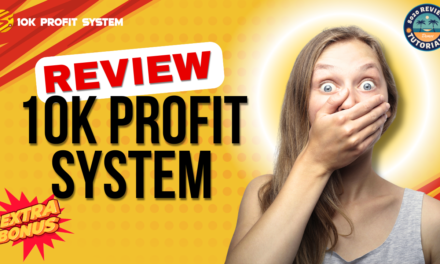The Ultimate Guide to Scaling Your Affiliate Business with Solo Ads
How To Make Solo Ads Work For You
Solo ads are one of the most powerful and effective tools for driving targeted traffic to your affiliate offers, but they need to be approached strategically to generate consistent sales and scale profitably.
In this guide, you’ll learn how to:
1. Find and vet solo ad sellers for high-quality traffic.
2. Test solo ads for conversions and profitability.
3. Scale your solo ad campaigns and build a long-term strategy for affiliate marketing success.
1. How to Find Solo Ad Sellers
The first step to making the most out of solo ads is finding sellers who can deliver high-quality, targeted traffic that will convert into sales.
Where to Find Solo Ad Sellers:
1. Solo Ad Marketplaces: Platforms like Udimi, TrafficForMe, and SoloAdX are dedicated to matching solo ad buyers with vetted sellers. These platforms provide key stats like seller reviews and traffic reports, making it easier to evaluate vendors.
2. Facebook Groups and Forums: Active Facebook groups and forums (like the Warrior Forum) often have sellers promoting their lists. Watch for recommendations from other marketers to find trusted sellers.
3. Word of Mouth: Networking with fellow affiliate marketers can give you firsthand recommendations of high-quality solo ad vendors.
2. Vetting Solo Ad Sellers
It’s crucial to ensure that the solo ad vendors you work with offer real, high-quality traffic from Tier 1 countries. This can drastically impact your conversions and profitability.
How to Vet Solo Ad Sellers:
Look at Reviews and Feedback: On platforms like Udimi, take the time to review seller feedback, specifically noting reviews that mention sales and conversions—not just clicks.
Ask Questions:
What niche does their list cater to? Make sure it aligns with your offer (e.g., make money online, health, etc.).
How frequently do they email their list? Fresh, engaged subscribers perform better.
What percentage of their traffic comes from Tier 1 countries (USA, UK, Canada, Australia)? Aim for at least 80-90% Tier 1 traffic.
Test Their Claims: Ask for their average opt-in rates, past sales results, and examples of similar campaigns to verify their credibility.
3. Running a Test Campaign
Before scaling your campaign, it’s essential to run a small test to ensure the vendor’s traffic converts well.
How to Test Solo Ads:
Start Small: Begin with a small order (100-200 clicks) to reduce risk.
Use a Proven Offer: Promote an affiliate offer that’s known to convert well in your niche. Ideally, choose one with a strong sales funnel (upsells, recurring commissions).
Track Everything: Use tracking software like ClickMagick or Voluum to monitor performance:
Total clicks delivered by the seller.
Opt-ins (how many people sign up via your landing page).
Sales/conversions (how many of these opt-ins result in sales).
Key Metrics to Monitor:
Cost Per Click (CPC): Aim for $0.35 to $1.00 per click depending on the seller’s traffic quality.
Opt-in Rate: Good opt-in rates typically range from 30-50%. If your rate is lower, consider improving your landing page or changing your offer.
Conversion Rate: Track how many opt-ins lead to sales. A 1-5% conversion rate is a good starting point for affiliate offers.
Earnings Per Click (EPC): This tells you how much revenue each click generates. Aim for an EPC that’s higher than your CPC to maintain profitability.
4. Scaling Your Solo Ad Campaigns
Once you’ve confirmed that a seller’s traffic converts well, it’s time to scale your campaign. Scaling should be done gradually to maintain profitability while increasing traffic volume.
How to Scale Safely:
Increase Your Orders Gradually: Start scaling by ordering 300-500 clicks and monitor the performance before moving to larger orders.
Test New Sellers: While continuing with your best-performing seller, begin testing other vendors to diversify your traffic sources and prevent list fatigue.
Optimize Your Budget: Reinvest your profits from the test campaigns to fund larger orders and continue growing your traffic.
5. Optimizing Your Sales Funnel for Better Conversions
Scaling your traffic works best when you optimize every step of your sales funnel. The better your funnel converts, the more profitable each solo ad campaign will be.
Steps to Optimize Your Funnel:
Landing Page: Keep testing headlines, images, and call-to-action buttons to improve opt-in rates. A/B test different elements to find what works best.
Email Follow-Up Sequence: Many affiliate sales happen in the follow-up process, so build a strong email sequence (5-7 emails) to nurture your leads and promote your offers.
Sales Pages: If possible, optimize the affiliate sales page by ensuring it has strong copy, a clear call-to-action, and testimonials that build trust.
6. Track and Analyze Performance
As you scale, you must constantly track and analyze the performance of your campaigns to ensure you’re maintaining profitability.
Key Metrics to Track:
Earnings Per Click (EPC): EPC is the average revenue generated per click. Your EPC should be higher than your CPC to remain profitable.
Return on Investment (ROI): Calculate your ROI using the following formula:
ROI (%) = [(Total Revenue – Total Ad Spend) ÷ Total Ad Spend] × 100
If your ROI is positive, you’re profitable. If it’s negative, you need to optimize further.
Monitor Seller Performance: If a seller’s performance drops, pause orders and evaluate whether to test a new seller or optimize your funnel.
7. Building Your Own Email List
While solo ads are great for short-term traffic, you’ll benefit greatly from building your own email list. Once you have a list of leads, you can market multiple affiliate offers without constantly buying new traffic.
How to Build Your Own Email List:
Create a Lead Magnet: Offer something valuable (like an eBook, free course, or exclusive content) to encourage solo ad traffic to opt into your email list.
Nurture Your List: Develop a relationship with your list by sending valuable content and promotions regularly. Promote multiple offers over time to maximize the lifetime value (LTV) of your leads.
8. Diversify and Expand Traffic Sources
Solo ads are just one piece of the puzzle. As your business grows, consider expanding into other paid traffic sources like:
Facebook Ads: Great for targeting niche-specific audiences.
Google Ads: Use both search and display ads to drive high-intent traffic.
Native Ads: Platforms like Taboola and Outbrain can help you reach a broader audience through content marketing.
Diversifying your traffic will reduce reliance on solo ads and create a more sustainable business model.
Conclusion
Solo ads can be an incredibly powerful tool for promoting affiliate offers, but they require a strategic approach. By following the steps in this guide, you’ll be able to find high-quality traffic, optimize your campaigns for better conversions, and scale your affiliate business for long-term success.





